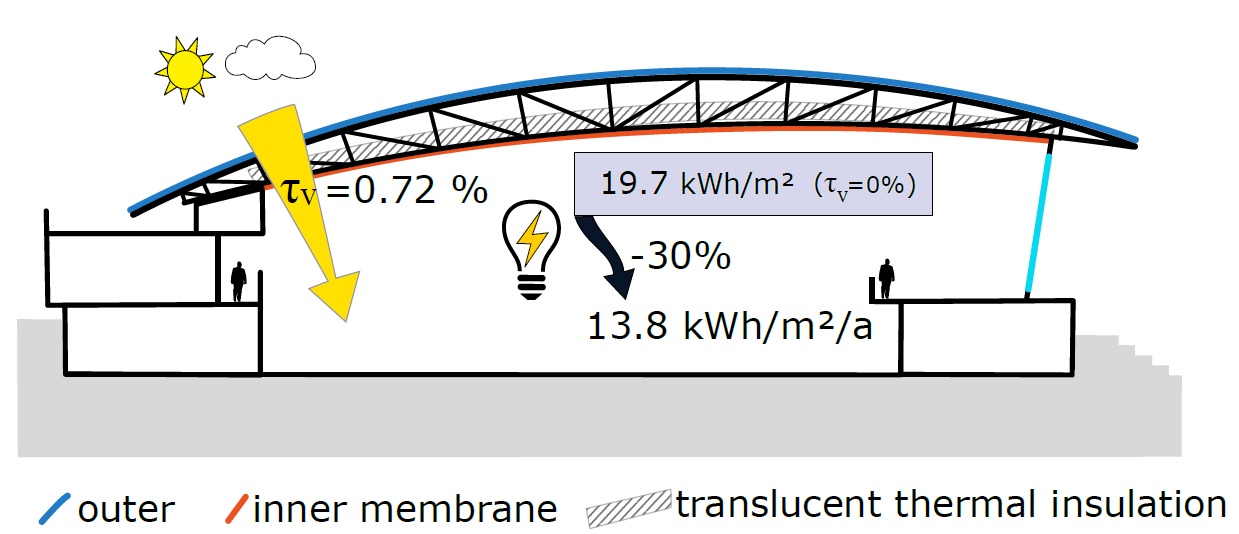Daylight usage in buildings improves visual comfort and lowers the final energy demand for artificial lighting. The question always occurs: how much conservation can you achieve? New upcoming or rare materials and constructions have a lack of information about their application. Therefore, the current work investigates the daylight performance of a multi-layer textile membrane roof with 2 300 m² on top of a sports hall. A translucent, thermal insulation with a glass fibre fleece between the roof membranes combines daylight usage and heating demand reduction. A sports hall with built year 2017 is selected as the case study building. The optical properties of the roof construction are measured. The (visual) light transmittance amounts to 0.72 % with a clean surface. An accordingly parametrized climate-based annual daylight modeling delivers daylight indicators for different construction scenarios. The results show that in comparison to only one glass facade, the additional translucent and thermally insulated membrane construction increases the annual daylight autonomy700/ continuous DA700 from 0/ 15 % to 1.5/ 38 %. In the roof covered areas of the sport field, this results in a reduction from 19.7 to 13.8 kWhel/m²/a electricity for the artificial lighting with dim control (30 % savings). Also, the influence of soiling on the light transmittance was determined with a relevant reduction of one layer about a factor 0.81. The novel results are of great value as a comparison and benchmark for planners and future buildings of similar type.

